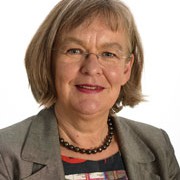Following up Finland recent pioneering project for building a deep storage of nuclear waste, how is Sweden current position on this topic and which are the implications for SGU? Responsibility in Sweden for taking care of the nuclear waste from the Swedish nuclear plants lies with the Swedish Nuclear Fuel and Waste Management Co (SKB). Site investigations have been carried out at two different locations along the South-East coast of Sweden, at Forsmark, c. 120 km North of Stockholm, and at Oskarshamn, c. 230 km South of Stockholm, with the objective of siting an underground repository for spent nuclear fuel. The current position in Sweden is that on the 16th of March 2011 SKB submitted a licence application to the Swedish Radiation Safety Authority (SSM) for the construction of a spent nuclear fuel repository at Forsmark and an encapsulation plant at Oskarshamn. The regulatory review of SKB’s licence application is ongoing, and the formal findings are planned to be submitted by SSM to the Swedish Government in 2017. The Swedish government takes the ultimate decision on whether or not to allow these final disposal facilities to be constructed, but not before the municipalities concerned have given their approval. A review is also undertaken by the Land and Environment Court based on the Environmental Code. Expertise at SGU has been involved in the geological investigations of both sites and also the site descriptive geological modelling work, primarily concerning bedrock geology and unconsolidated deposits. The site descriptive modelling also included the geological, palaeoclimate and historical evolution, as well as future development of the landscape at both sites. However, it should be noted that geological expertise at SGU has not been involved in SKB´s site selection process, but only in the development of an understanding of the...
The nuclear waste management in Sweden – Interview with Ms Lena Söderberg, Director General of SGU
posted by EuroGeoSurveys
The nuclear waste repository in Finland – Interview with Mr Mika Nykänen, Director General of GTK
posted by EuroGeoSurveys
Finland recently approved the construction of a nuclear waste repository within its territory, after more than 30 years of investigations. The construction license was granted on 12 November 2015. Construction work can be started at Olkiluoto at the end of 2016. The disposal facility is expected to be ready for operation in 2023. Why is Finland the first country in the world to start operating a spent nuclear fuel disposal facility? First of all, we are fortunate to have ancient crystalline bedrock suitable for geological waste disposal. Seismic activity is low, there is no volcanic activity and the bedrock properties related, for example, to groundwater flow are favourable. In the past, GTK has carried out nationwide geological, geochemical and geophysical mapping, so the records provided a good starting point for evaluating the suitability of the bedrock and for site selection investigations. It was easy to find numerous candidate sites meeting the requirements of international standards. Nevertheless, a lot of complementary studies specific for nuclear waste disposal were required, and that’s what we have been doing during the past decades. Another key element is long-term planning. After the Finnish bedrock was shown to be suitable for nuclear waste disposal, the Finnish Government already made a decision-in-principle in 1983, which defined the objectives and schedule for nuclear waste management. Thus, together with the Nuclear Energy Act, the responsibilities of the various parties (industry, regulators, government) were clearly defined. The funding of the Nuclear Waste Management Fund was also organized. Without political acceptance and general transparency, nuclear waste programmes cannot proceed. Now that the construction license has been granted, will GTK maintain its research activities linked to the spent nuclear fuel disposal facility at Olkiluoto? Definitely, yes. Nuclear waste disposal is moving from site characterization to the...


